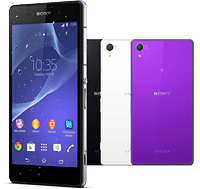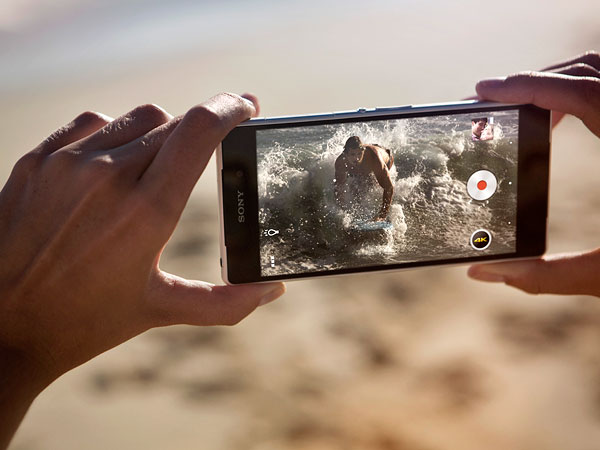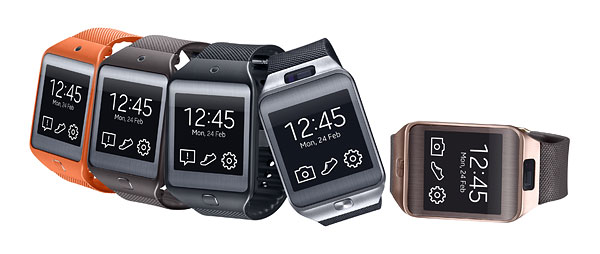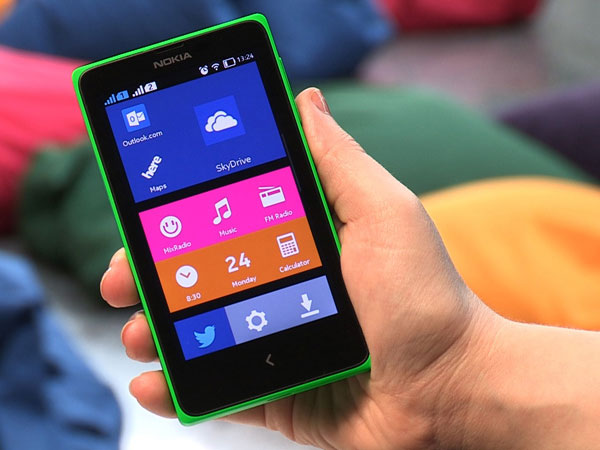Mobile World Congress: Next-gen smart devices debut promising better photo, video features
posted Monday, February 24, 2014 at 4:08 PM EDT

The mobile industry's biggest tradeshow, Mobile World Congress, kicks off today in Barcelona, Spain. With the exception of Apple, all the industry heavyweights are there to launch their latest mobile product offerings -- and quite a few of them look pretty interesting as photo and video devices.
Perhaps the most exciting to us are Sony's new Xperia Z2 smartphone and tablet. The Android 4.4 KitKat-based duo both share new Live Color LED display technology that, according to Sony, provides the widest color gamut found on any mobile device. The Sony Xperia Z2 tablet has a 10.1-inch, 1,920 x 1,200 pixel screen, while the Xperia Z2 smartphone opts for a more pocket-friendly 5.2-inch 1,920 x 1,080 pixel screen. (That's just slightly bigger than the 5.0-inch screen of last year's Xperia Z1, despite a subtle reduction in the phone's weight, width, and thickness.)

Like last year's models, both phone and tablet are dustproof and waterproof to 1.5 meters, allowing use in pretty much any environment. Each is based around a 2.3 GHz quad-core Qualcomm Snapdragon 801 processor with Adreno 330 graphics processor, and includes three gigabytes of RAM. Both devices are available with up to 16GB of storage plus a MicroSD card slot, although 4GB of that storage is occupied by the operating system in the phone.
For the Xperia Z2 phone, Sony has included a camera based around a 1/2.3-inch, 20.7 megapixel Exmor RS backside-illuminated CMOS image sensor and a Sony G-branded 27mm f/2.0 lens. A BIONZ for Mobile image processor provides the horsepower for Sony's pattern-matching By-Pixel Super Resolution technology, allowing a more intelligent 3x digital zoom function. You can also shoot 120fps video at 1,280 x 720 pixel resolution, then edit it in the phone to create 1/4-speed slow-motion clips.

And with ultra high-def video being the current focus of the consumer electronics industry, both 4K video capture and 4K MHL 3.0 output are provided. The tablet, meanwhile, opts for a simpler 8.1-megapixel Exmor RS-based rear camera. Both devices also have 2.2-megapixel front-facing cameras.
With their wide-gamut screens and go-anywhere designs, both the Xperia Z2 smartphone and tablet look to make interesting companions for your Wi-Fi capable camera. Pricing hasn't yet been disclosed for either device, but they'll be shipping from March 2014. Also announced were the Xperia M2 smartphone and a wearable computing device, the SmartBand SWR10.
Samsung also made a big splash, overhauling its smart watch and replacing its flagship smartphone. The Samsung Galaxy S5 is the big news, sporting a microscopically larger 5.1-inch Super AMOLED screen with 1,920 x 1,080 pixel resolution, a 2.5-GHz quad-core processor, 2GB of RAM, and an increase in battery life. There's also a new 16-megapixel image sensor capable of 4K video capture and real-time HDR imaging. Samsung has also gifted its new, 1-meter waterproof flagship with better build quality and a grippier, textured rear surface, and added an iPhone-esque fingerprint scanner.

And then there's the new Samsung Gear 2 and Gear 2 Neo smartwatches, followups to last year's rather divisive Galaxy Gear. The new models ditch Android for the Samsung-backed Tizen, another Linux-based operating system with lighter requirements more suitable to a wearable device. Performance is also improved with a higher-spec'ed processor, and a heartrate monitor added. And there's a new design that removes electronics from the wrist strap, providing a more traditional watch-like look, and a home key has been added to make homescreen access easier. The Neo version ditches the camera and metallic finish of its sibling, aiming for a lower cost (and perhaps a slightly greater battery life.)
Available from April, no price has been set for the Samsung Galaxy S5 or the Gear 2 and Gear 2 Neo. The company also launched a new fitness device, the Samsung Gear Fit, which seems to lie somewhere between existing fitness trackers and smartwatches in terms of its feature set.

As well as the big news from Samsung and Sony, a number of other manufacturers are making headlines at Mobile World Congress. Perhaps the most interesting of these is a technology announcement from sensor manufacturer Aptina. Its new, 1/2-inch type AR2520HS backside-illuminated CMOS sensor offers a 25-megapixel resolution. Thankfully, it accompanies its increase in resolution with a greater surface area than typical 1/3-inch smartphone sensors, although it's still tiny compared to the 1/1.2-inch sensor of Nokia's 808 PureView, and trails it by a long way in terms of resolution as well. Interestingly, though, it's capable of both 4K video capture at a 30p frame rate, and 120fps capture at 1,920 x 1,080 pixel resolution. Clocking all that data off the chip requires multi-gigabit data streams via 8-lane MIPI and 12-lane HiSPi interfaces. Sampling of the chip will start in the second quarter of 2014, so don't expect to see it in products until late this year or early next.
Nokia added yet another mobile operating system to its roster: As well as the Symbian and MeeGo operating systems that it has now moved away from, and the Windows Phone OS used in its current smartphones, the Finnish company announced three new pseudo-Android phones. Based on the Android Open Source Project, the Nokia X, X+, and XL are entry-level phones with a heavily customized, Microsoft-esque interface and no access to Google apps such as the Play store, Maps, and so on.

HTC were also there with new products, but likewise no new flagships. The HTC One remains for a little longer, with a replacement expected next month. Instead, the company launched a couple of mid-range Android phones. The HTC Desire 816 and 610 are, it has to be said, rather generic, sporting 13-megapixel and 8-megapixel rear cameras respectively. Apparently the company's much-hyped Ultrapixel sensor -- which trades resolution for pixel size, and thus reduced noise -- isn't ready to trickle down to more affordable models just yet. Price for the new models hasn't been revealed, but they'll be arriving around April/May 2014.
And finally, LG also offers up two new phones. The LG G Pro 2 has a 5.9-inch phablet form factor and a 13-megapixel rear camera with optical image stabilizer. The LG G2 mini, meanwhile, aims for a much more compact form factor with 4.7-inch screen and a choice of 13-megapixel or 8-megapixel rear cameras. No word on pricing or availability.